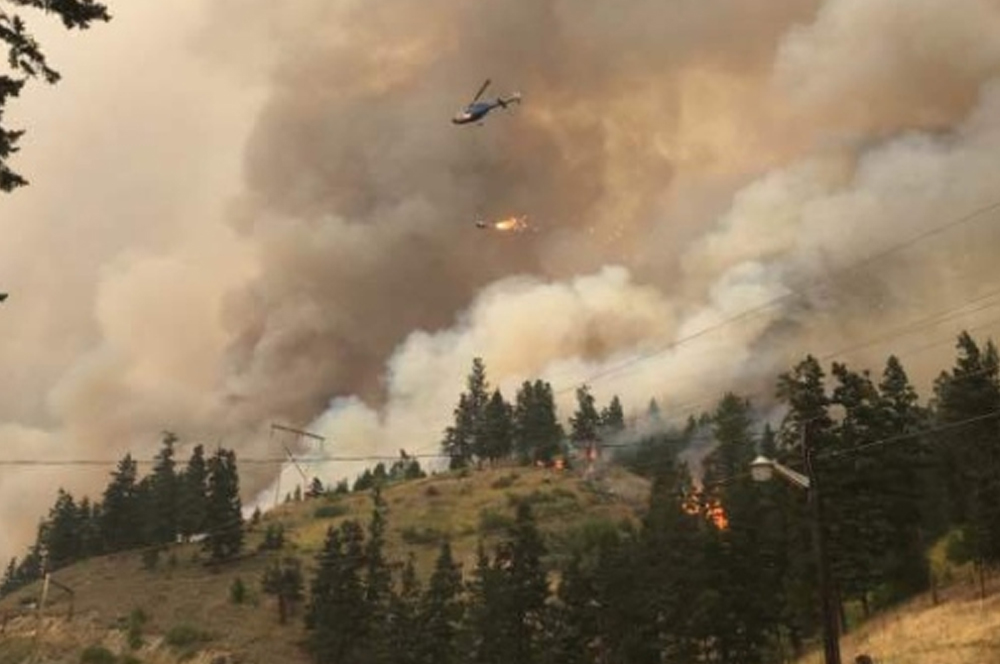The largest B.C. wildfire season on record has emitted an estimated 190 million tonnes of greenhouse gases into the atmosphere — a total that nearly triples B.C.'s annual carbon footprint.
According to Natural Resources Canada, the total could grow by another 20 per cent as the wildfire season continues.
"Certainly these emissions are large — much larger than the emissions in B.C. from all other sectors," said Carolyn Smith, a research scientist at the Pacific Forestry Centre. Since 2005, the province has emitted an average of 65 million tonnes of carbon each year.
Smith says the official wildfire emissions total won't be available until next year, when researchers are able survey the all of the damage. To date, an estimated 1 million hectares of forest have been burned by over 1,000 different fires.
Climate change feedback
Werner Kurz, a senior research scientist at the Canadian Forest Service, says the emissions are part of an 'alarming' feedback loop, fuelled in large part by climate change.
"With climate change increasing, the risk of these emissions increasing in the future is very high," said Kurz. "If we get more of these extreme summers in the future, the likelihood is that we get more of these large emissions — and they of course add to the atmospheric burden, and therefore accelerate climate change."
The unprecedented wildfire season has renewed calls for the province to include wildfire emissions in it's annual greenhouse gas inventory — B.C.'s official carbon footprint that informs climate strategies and emissions targets.
Although the provincial government records and reports the total annual emissions from wildfires, those figures are considered to be natural disturbances and are therefore not included in B.C.'s annual inventory.
But Caitlin Vernon with Sierra Club B.C. argues that numerous wildfires are the result of human carelessness, and that failure to include fire emissions in the greenhouse gas inventory has lead to poor forest management.
"To make good decisions, you need to be factoring all of the evidence into your decision-making," said Vernon.
Impacts on province's bear population
But the loss of habitat is raising concerns over food shortage for wildlife in B.C.
"We're concerned about the impact on wildlife-conflicts this Fall, especially for species like bears," said Helen Schwantje, the provincial wildlife veterinarian.
Schwantje said in the past, there have been records of fires ripping through an area and causing a food shortage.
"Large carnivores had nothing to eat and have started utilizing human habitations and crops and basically fruit trees," she said, adding that she is worried about an increase in human-bear conflicts.
The Northern Lights Wildlife Shelter in Smithers B.C., said it's ready to take care of bears that have been pushed out of their habitat following the wildfires.
"We're preparing to have all our enclosures ready," said Angelika Langen, co-founder of the bear sanctuary.
Langen said they have volunteers on standby and have been gathering food sources for the possible influx of wildlife.
Though, she said it's too difficult to estimate how many bears might come through, they have capacity for 70 animals.
Fire ecologist Robert Gray said in the long-run wildfires actually improve bear habitats.
"Regrowth tends to be very very succulent," he said, adding that he expects their regrowth in a year from now.
"Ash is fertilizer, the black soil gets heat early in the Spring, one of the first places that start regrowth first and it's a magnet for bears."

